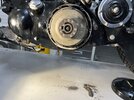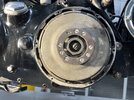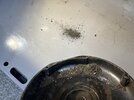So after rebuilding the carbs on my new machine, I decided to take peek at the clutch, just to check it out before a test run. I removed the clutch cover to find, well…..dust.
Does anyone have any recommendations or suggestions if I should go back with originals parts or is there a better option?
Does anyone have any recommendations or suggestions if I should go back with originals parts or is there a better option?





